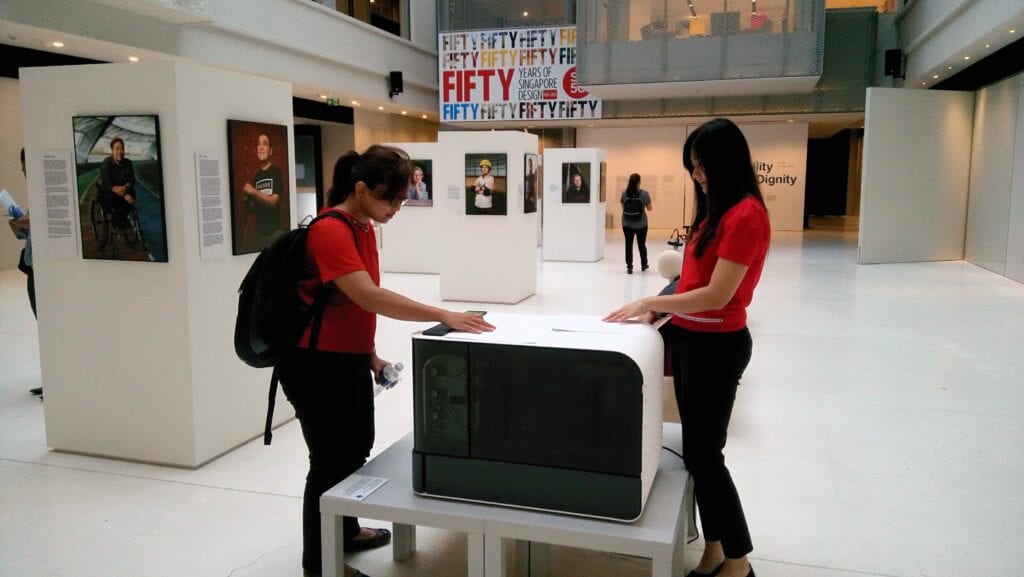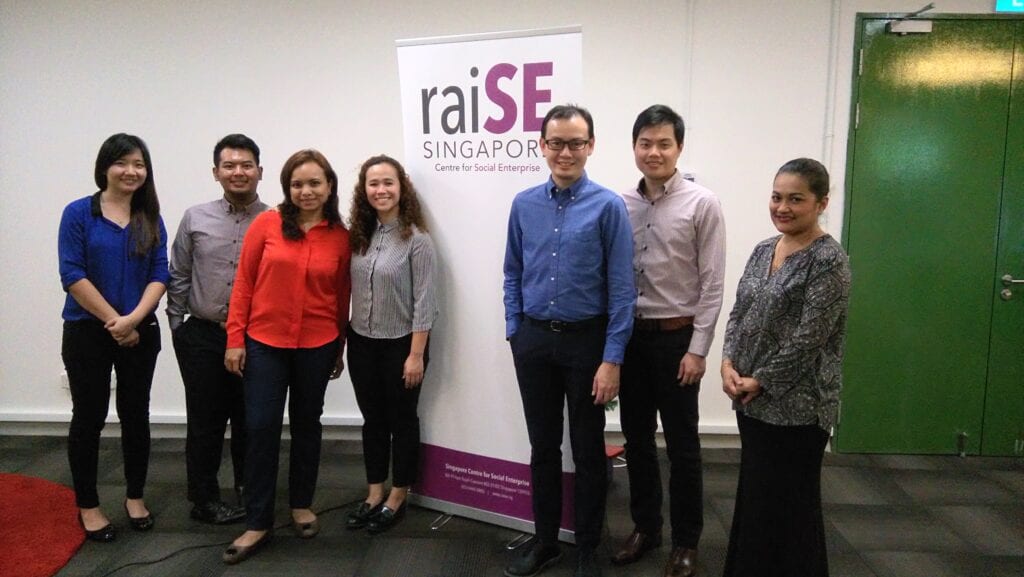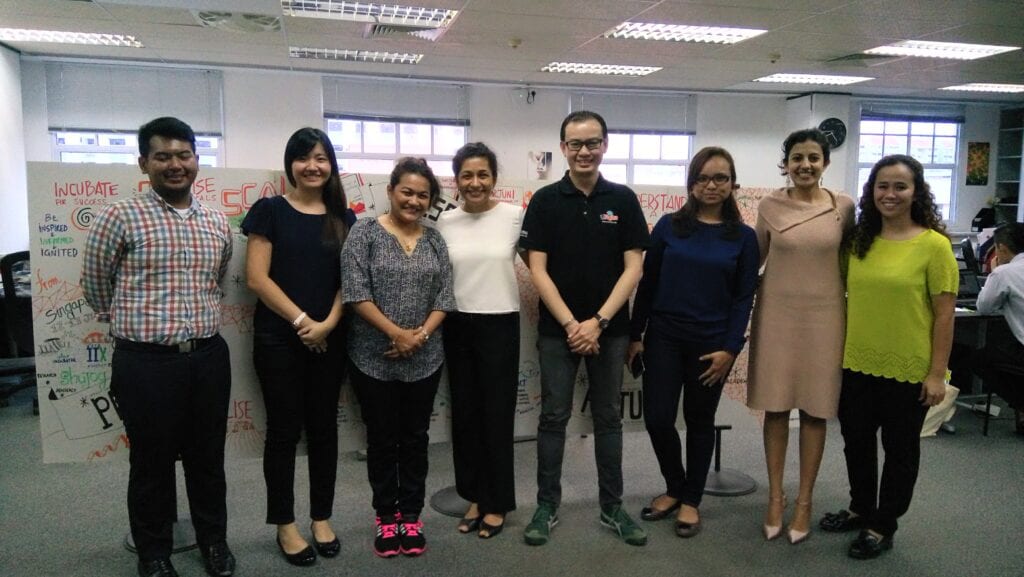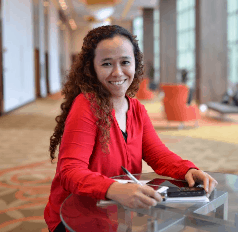Author: Noor Hanis Harun
Agensi Inovasi Malaysia (AIM) has organised a capacity building programme for its Social Innovation team to Singapore from 5th to 9th December, 2016. The overall objectives of the capacity programme was to enable Malaysia to:
- Activate successful social public-private partnerships;
- Initiate robust social financing models;
- Nurture and sustain social purpose organisations (SPOs) through strategic oversight of social progress; and
- Mobilise strategies to develop and grow the supply and demand side of the social sector.
These can be achieved through modelling from successful examples in Singapore and from expert guidance and learning engagements.

We visited some of the most prominent organisations in Singapore which included Singapore Management University, National Design Centre, Garena, DBS Asia X and Enabling Village among many others. The 5-day capacity building programme was packed with meetings of relevant stakeholders who are involved in social innovation and social financing in Singapore with the support AVPN.
The team was given the privilege to explain about AIM and the initiatives that we undertook back home in support of social innovation as part of Malaysia’s transformation agenda. Each time I had explained what we were doing, my mind had glided on the broad definition of Social Innovation. One similar thing that was being shared during the meeting was that each sector (government, private and social) tend to work in a silo and made collaboration impossible to take place and best practices are not being shared thus hindering social innovation from happening.


In Singapore, social innovation work and social enterprises seem to concentrate on specific thematic issues every year, ranging from elderly, disability inclusion and matters related to mental health with seamless tri-sector collaboration. It was exciting to see the growth of social innovation in these areas. Solutions were supported by either grants or subsidies and the availability of subsidies created successful empowerment of those with a vested interest in crafting and delivering a more creative and innovative solution to social problems. However, it was also noted in some case, that the role of government in dictating where social innovation ought to take place, through policy and funding, can be significant in the absence of a strong pool of social entrepreneurs.
We also visited the Enabling Village, a one-stop centre and community space for people with disabilities where the disabled have their own facilities and services dedicated to integrating them with others in society. Having a place like this shows that Singapore is serious about making sure that people with disabilities (PWDs) are not being left out of the community and that they are getting the same opportunity as others. Various innovations created to cater to PWDs were exhibited in one of their showrooms and we were given the chance to try a special chair invented for the use of Autistic children. We also bought handmade handicrafts by PWDs in one of the labs there. The whole idea of having this place is to build a more inclusive society and the creation of a society that values everyone.

During our meetings and visits, we were introduced to innovative business ideas that many social innovators from both the for-profit organisation and non-profit organisation have come up with. We had the chance to meet organisations involved in philanthropy and other giving models including Community Foundation of Singapore, UOB Venture Management Private Limited and SymAsia. We were also given the insight on how high net worth individuals in Singapore provided a significant proportion of their wealth to some social causes that they are committed to for larger purposes. These could be seen from the work done by SimplyGiving.com, an internet crowdfunding platform for a specific charity or cause and Cambridge Associates who focuses on Mission-Related Investing Practice (MRI) with their clients.
Having the chance to listen and ask a question on what social innovation is in Singapore, I had gathered that most social entrepreneurs have a similar objective which is to focus on solving the unmet needs and maintaining its financial sustainability, so they can keep doing it. So what can we learn from Singapore to harness the uncertainty of social innovation and move towards new Social Financing models? Perhaps governments can be more proactive by making it easier for social innovators such as social enterprises, social businesses, social purpose organisations, non-governmental organisation or even individuals who are passionate in making social change to have the flexibility they need to succeed. Having said that social innovators have to be mindful in measuring the impact of their social intervention work whilst continuing to create out-of-the-box solutions, not being limited by government approved budget or being too dependent on government funding. As what is being implemented in Malaysia, we have trained social innovators to measure their impact using our Social Impact Measurement Toolkit (SMIT). Therefore, the impact and outcome of each social intervention project can be translated in dollars and cents giving funders and/or donors the comfort level they would need in seeing how their money is being spent. With greater participation from all sectors, this will allow positive collaborations that could pave the way for future social financing models.

She started her stint in AIM in June 2016 with the primary responsibilities to support, plan and project manage the programmes that are assigned to Social Innovation Department to support the country’s social innovation agenda in line with the Eleventh Malaysia Plan. A major in Public Relations, she has worked in few local publication companies including Utusan Melayu Berhad, Star Publications Berhad and Kosmo!. She enjoys mountain climbing and a certified open-water advanced diver.
















